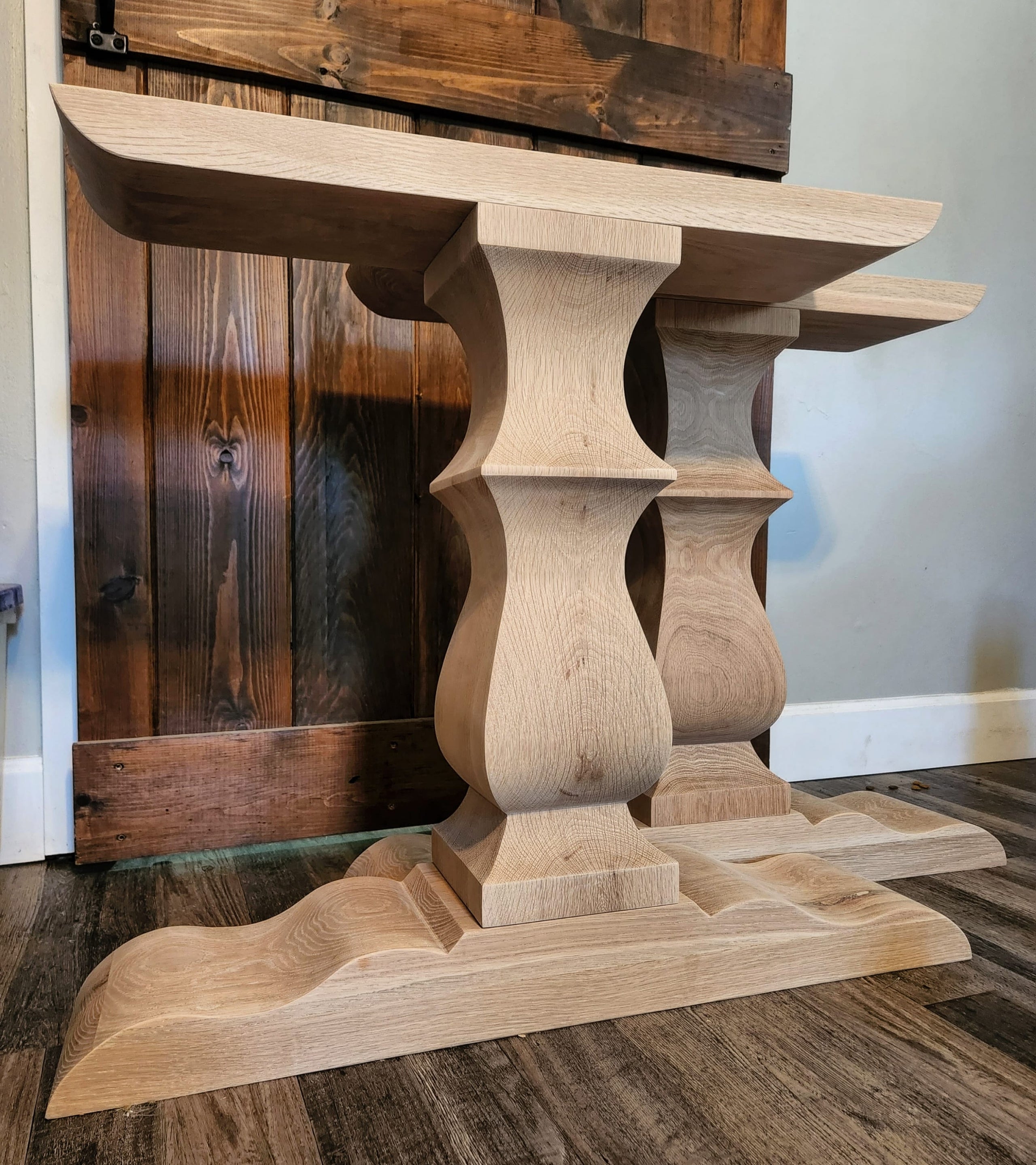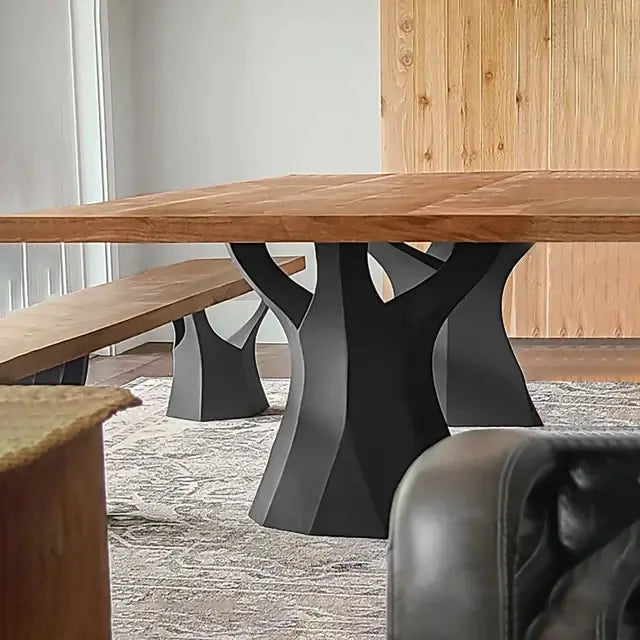Exactly how to Select the Perfect Dining Room Table Legs for Your Home Decoration
Exactly how to Select the Perfect Dining Room Table Legs for Your Home Decoration
Blog Article
Choosing the Perfect Table: What Styles Work Best for Your Home?
Selecting the optimal dining table for your home can be a nuanced process that balances visual appeals and functionality. To browse these choices efficiently and locate a table that truly matches your home, think about the complying with elements in detail.
Examining Your Space
Assessing the measurements and layout of your dining location is a critical very first step in selecting the best table. Begin by measuring the length and width of the room, making up entrances, windows, and various other building functions that can influence table positioning. This ensures that your table not just fits but additionally enables comfy motion around it.
Take into consideration the number of individuals you usually delight. A table ought to accommodate your family's day-to-day needs while supplying adequate flexibility for occasional visitors. As a guideline of thumb, designate at least 24 inches of table width per person to make sure a comfortable dining experience.
It's additionally vital to preserve proper clearance around the table. Ideally, there must go to the very least 36 inches between the table side and wall surfaces or various other furnishings, allowing simple gain access to and activity. For areas where chairs with arms or extra storage space systems like buffets are involved, boosting this clearance to 48 inches is a good idea.
Lighting and ambience play considerable roles as well. Make sure that your table lines up with existing lights components or prepare for ample illumination options. This comprehensive spatial assessment guarantees that your eating table not just fits physically yet also integrates with your area's general capability and visual.
Popular Table Styles

Standard table usually include luxuriant information, curved legs, and abundant wood coatings, stimulating a feeling of ageless style. They are perfect for homes with traditional style or those aiming to add a touch of sophistication to their eating area.
Modern dining tables prioritize simpleness and clean lines, typically including materials like glass and steel. These tables are optimal for modern spaces, supplying a sleek and uncluttered appearance that complements minimalist layout approaches.
Rustic table, on the other hand, stress natural materials and a handmade look - dining room table legs. They usually feature reclaimed timber and a troubled coating, developing a cozy and inviting atmosphere. These tables work well in farmhouse-style homes or those looking for a comfy, organic feeling
Industrial dining tables integrate basic materials such as steel and wood, often showcasing a practical visual. This design is appropriate for lofts or metropolitan rooms, adding a touch of sturdy charm and toughness to the eating experience.
Each design offers distinctive advantages, making it vital to pick one that straightens with your home's general style and your personal choices.
Material Selections
When picking an eating table, the selection of product plays an essential function in identifying both the table's aesthetic appeals and functionality. Timber, steel, glass, and composite materials each deal one-of-a-kind advantages and challenges, making it critical to line up the product with your home's decor and way of life needs.
Wood is a timeless and versatile option, readily available in selections such as oak, walnut, and mahogany. Understood for its longevity and heat, timber complements both typical and contemporary interiors. Nonetheless, it needs routine maintenance to stop scrapes and bending.
Steel tables, commonly crafted from stainless steel, light weight aluminum, or functioned iron, are applauded for their modern charm and effectiveness. They are especially matched for industrial or minimalist settings yet can be vulnerable to damages and might feel chilly to the touch.
Glass dining tables bring an air of sophistication and openness, suitable for smaller rooms as they produce an illusion of more room. While simple to tidy, glass can be prone to smudges and calls for cautious handling to stay clear of chips and splits.
Composite materials, such as MDF and plywood, offer affordable and customizable options, though they might lack the long life of all-natural materials. Choosing the right material guarantees your dining table is both a useful property and a visual delight.
Shape and Size Considerations
After establishing Homepage the suitable material for your table, the following consideration is choosing the best sizes and shape to match your room. The shape of the table significantly affects the area's visual and functionality. Rectangular tables, one of the most usual shape, are suitable for bigger rooms and can accommodate a greater variety of guests. They additionally permit an extra formal dining experience. Alternatively, round tables cultivate a sense of affection and are outstanding for smaller sized eating locations, motivating discussion by removing corners and making everybody feel equally included.
As a regulation of thumb, assign at least 24 inches of table size per person to make certain comfortable dining. Additionally, think about the table's clearance space: there should click this be at the very least 36 inches in between the table edge and the walls or various other furniture. Extending tables provide flexibility if you frequently organize bigger events, giving added seating when required without occupying extra space daily.
Matching Your Design
Choosing a dining table that integrates with your existing style is critical in developing a natural and welcoming area. Begin by examining your existing interior layout style, whether it be contemporary, conventional, rustic, or diverse. The table should match the total visual, not take on it. A streamlined, minimal table with clean lines is perfect for a modern-day home, while a vintage, ornate table matches an extra typical setup.
If your decor features warm tones and all-natural materials, think about a wooden table to boost the natural feel. Alternatively, a glass or steel table may be much more suitable in an area dominated by awesome shades and commercial components.
Structure plays a vital function. A rough-hewn, redeemed timber table can include personality to a rustic space, while a polished marble surface area can boost an elegant eating area. Consider the range and percentage of the table in connection to the area size and existing furniture. A well-matched dining table not only boosts aesthetic allure but also enriches the total eating experience.

Verdict
Picking the suitable eating find out here now table requires mindful factor to consider of room, design, materials, shape, and dimension. Traditional tables complement classic insides with rich wood surfaces, while contemporary tables fit contemporary setups through glass and steel.
Report this page